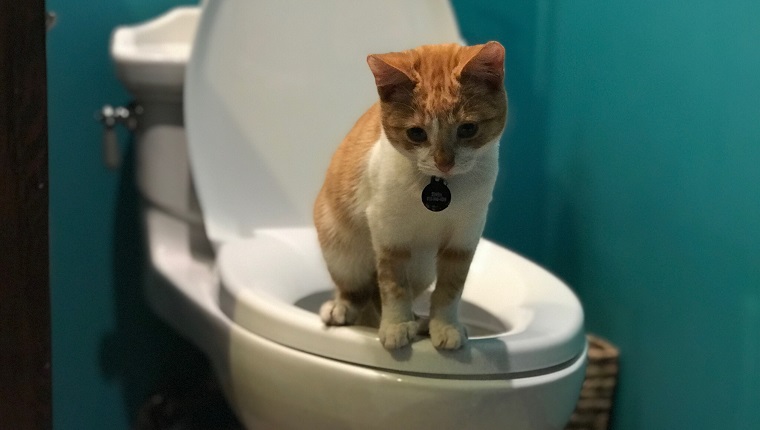On this page in the next paragraph yow will discover additional professional advice when it comes to Don’t flush cat feces down the toilet.

Introduction
As cat owners, it's necessary to be mindful of how we dispose of our feline close friends' waste. While it might seem convenient to purge feline poop down the toilet, this technique can have damaging repercussions for both the environment and human health.
Environmental Impact
Flushing cat poop introduces unsafe microorganisms and bloodsuckers right into the water system, posturing a significant threat to aquatic communities. These contaminants can negatively influence aquatic life and concession water high quality.
Health Risks
In addition to ecological worries, flushing cat waste can additionally present health and wellness dangers to humans. Pet cat feces might consist of Toxoplasma gondii, a parasite that can cause toxoplasmosis-- a possibly extreme ailment, specifically for expecting women and people with damaged immune systems.
Alternatives to Flushing
Fortunately, there are more secure and more liable ways to dispose of pet cat poop. Think about the adhering to choices:
1. Scoop and Dispose in Trash
One of the most common approach of throwing away cat poop is to scoop it into an eco-friendly bag and throw it in the garbage. Make certain to use a devoted trash inside story and dispose of the waste quickly.
2. Usage Biodegradable Litter
Opt for eco-friendly feline litter made from products such as corn or wheat. These litters are eco-friendly and can be securely thrown away in the garbage.
3. Hide in the Yard
If you have a backyard, take into consideration burying pet cat waste in an assigned location away from vegetable yards and water sources. Be sure to dig deep enough to avoid contamination of groundwater.
4. Mount a Pet Waste Disposal System
Buy a pet garbage disposal system specifically designed for pet cat waste. These systems utilize enzymes to break down the waste, lowering odor and ecological effect.
Verdict
Responsible pet ownership expands beyond supplying food and shelter-- it also involves proper waste monitoring. By refraining from purging cat poop down the bathroom and going with alternative disposal techniques, we can lessen our ecological impact and secure human wellness.
Why Can’t I Flush Cat Poop?
It Spreads a Parasite
Cats are frequently infected with a parasite called toxoplasma gondii. The parasite causes an infection called toxoplasmosis. It is usually harmless to cats. The parasite only uses cat poop as a host for its eggs. Otherwise, the cat’s immune system usually keeps the infection at low enough levels to maintain its own health. But it does not stop the develop of eggs. These eggs are tiny and surprisingly tough. They may survive for a year before they begin to grow. But that’s the problem.
Our wastewater system is not designed to deal with toxoplasmosis eggs. Instead, most eggs will flush from your toilet into sewers and wastewater management plants. After the sewage is treated for many other harmful things in it, it is typically released into local rivers, lakes, or oceans. Here, the toxoplasmosis eggs can find new hosts, including starfish, crabs, otters, and many other wildlife. For many, this is a significant risk to their health. Toxoplasmosis can also end up infecting water sources that are important for agriculture, which means our deer, pigs, and sheep can get infected too.
Is There Risk to Humans?
There can be a risk to human life from flushing cat poop down the toilet. If you do so, the parasites from your cat’s poop can end up in shellfish, game animals, or livestock. If this meat is then served raw or undercooked, the people who eat it can get sick.
In fact, according to the CDC, 40 million people in the United States are infected with toxoplasma gondii. They get it from exposure to infected seafood, or from some kind of cat poop contamination, like drinking from a stream that is contaminated or touching anything that has come into contact with cat poop. That includes just cleaning a cat litter box.
Most people who get infected with these parasites will not develop any symptoms. However, for pregnant women or for those with compromised immune systems, the parasite can cause severe health problems.
How to Handle Cat Poop
The best way to handle cat poop is actually to clean the box more often. The eggs that the parasite sheds will not become active until one to five days after the cat poops. That means that if you clean daily, you’re much less likely to come into direct contact with infectious eggs.
That said, always dispose of cat poop in the garbage and not down the toilet. Wash your hands before and after you clean the litter box, and bring the bag of poop right outside to your garbage bins.
https://trenchlesssolutionsusa.com/why-cant-i-flush-cat-poop/

I'm just very excited about Don’t flush cat feces down the toilet and I am hoping you appreciated our blog entry. Appreciated our write-up? Please share it. Let someone else locate it. We enjoy reading our article about How to Dispose of Cat Poop and Litter Without Plastic Bags.
Book Today